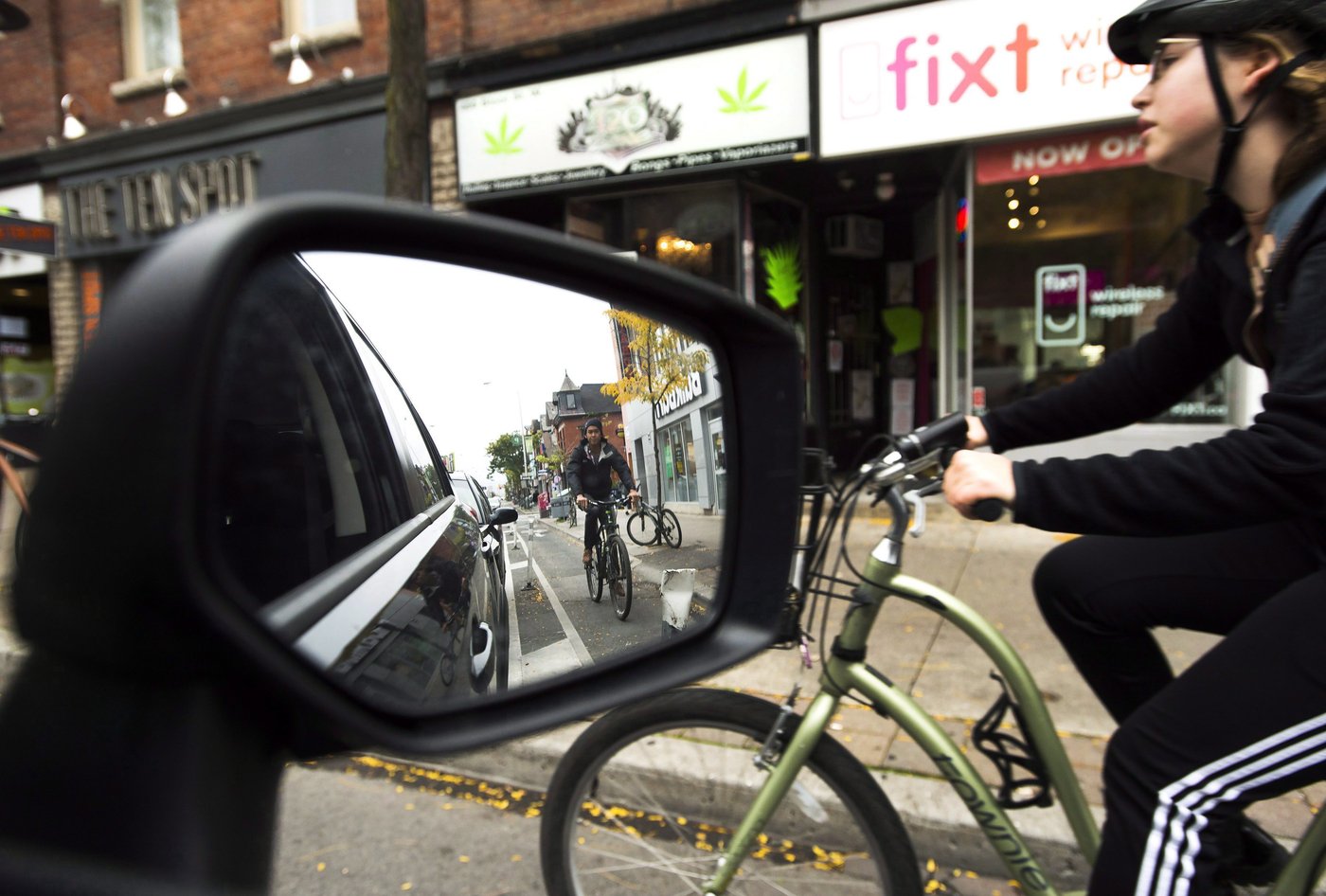Infra
Which ‘nasty and terrible’ bike lanes are on Ford’s hit list for removal in Toronto?

Premier Doug Ford wouldn’t confirm a media report on Wednesday that the Bloor Street bike lane was among one of several he’s eyeing for removal in Toronto, but if it is on the chopping block, the Bloor-Annex BIA says he’s barking up the wrong street.
In a release Wednesday, the BIA released statistics touting the success of the Bloor bike lane, and other bike lanes in the Annex area, saying it was “dismayed” after hearing they could be removed.
“If Premier Ford is looking for evidence showing the positive impact of bike lanes, he should look no further than the Bloor Annex Business Improvement Area (Bloor Annex BIA),” the BIA said, adding that removing any bike lanes in the area would be “disastrous to the neighbourhood.”
“Premier Ford has asked for the installation of bike lanes to be evidence-driven. Well, all of the evidence we’re seeing tells a very compelling story – bike lanes are good for business, they improve safety for all road users, and reduce congestion,” said Brian Burchell, general manager of the Bloor-Annex BIA. “Bloor Street in the Annex is a thriving main street and the bike lanes are an essential part of what makes that possible.”
Earlier this week, the Ford government introduced legislation that would ultimately give the province the power to dictate the fate of Toronto’s bike lanes.
The new bike lane legislation, which is called The Reducing Gridlock, Saving You Time Act, was introduced by Transportation Minister Prabmeet Sarkaria on Monday.
The bill would require municipalities to ask the province for permission to install bike lanes in situations where a lane of vehicle traffic would have to be removed.
It would also give the province the power to review existing bike lanes, and in some cases, remove them — a decision that would fall on Sarkaria.
When pressed on which lanes the government was considering removing, Sarkaria’s office offered the following vague response.
“We all know which lanes are causing further congestion across our city. Those are the ones we’ll be focusing on as we work through the review process.”
A media report suggested that among the lanes being eyed for removal are Bloor Street, Yonge Street and University Avenue. While Ford’s office wouldn’t confirm that with CityNews, the Premier did reference those three streets at Queen’s Park on Wednesday.
“Let’s all go around and hop on our bicycles and go down the crowded streets that are just absolutely insanity right now,” Ford said facetiously. “On Bloor, on Yonge, on University. No. People want reasonable judgment.”
The bike lane legislation still has to be debated and reviewed by a parliamentary committee before becoming law, but with the government’s majority it’s expected to pass.
Ford took another jab at bike lanes at Queen’s Park on Wednesday calling them “nasty and terrible” during a heated exchange with Leader of the NDP, Marit Stiles, about traffic gridlock and delays in transit projects.
NEW – Fiery exchange between the Premier and the leader of the opposition. Stiles asks Ford about delayed transit projects. He responds by referencing “Nasty, terrible” bike lanes. Asked about the Metrolinx CEO’s salary, Ford talks about minimum wage increases. pic.twitter.com/DXJhvpxzJo
— Richard Southern (@RichardCityNews) October 23, 2024
Cycling advocates, meanwhile, have vehemently opposed the bike lane bill, calling it an overreach of provincial powers.
“The province coming in and saying, no, us unilaterally will decide what stays what gets built is really just overreach,” Michael Longfield, executive director of Cycle Toronto, told CityNews during a rally last week.
“These types of infrastructures are really meaningful to people; they help people get to parts of the city, and they help people make local trips,” added Longfield.
Toronto Mayor Olivia Chow, an avid cyclist herself, said she does not support the bill, which would limit city powers.
“It’s always better when we work together to get things right,” she wrote in a statement. “To tackle congestion and keep people safe on city roads, we need all types of transportation. The province should focus on their job of finally getting the Eglinton Crosstown and Finch LRT open, which will have a huge impact on congestion in our city.”
The Association of Municipalities of Ontario also weighed in on the legislation, saying: “We urge the province to respect local decision-making when considering transportation improvements and not repeat its mistakes of the past.”
After hearing about the province’s plan to take over bike lane decisions, Toronto Coun. Shelley Carroll, who is also the city’s budget chief, wanted to know who will foot the bill if bike lanes are removed.
“If we put in a bike lane, we’re now gathering data on it and seeing it through its first year and he wants to remove it, he better have a cheque.”
Bloor Annex BIA bike lane stats:
EVIDENCE-BASED HIGHLIGHTS: (Source – Bloor Annex BIA)
• Monthly customer spending and number of customers in the Bloor Annex increased after bike lanes were installed
• Retail vacancies in the Bloor Annex have not changed in eight years since bike lane installation
• Road safety for all users has improved since the installation of bike lanes resulting in fewer fatalities and better road safety outcomes for all road users
• No evidence of increased emergency response times due to bike lanes said chiefs of Toronto Paramedics and Toronto Fire to city’s Infrastructure & Environment
• Putting bike lanes on residential streets would have an extreme negative impact on street parking for residents
• Bike lanes reduce congestion
BY THE NUMBERS:
• 1 million: approximate number of cyclists who rode the Bloor Street bike lanes between Avenue Road and Shaw Street between February 2018 and February 2019
• 8,000: number of cyclists per day that Bloor Annex BIA believes currently use the Bloor bike lanes today
• 9 years: number of years that Bloor Annex bike lanes have been part of complete street renewal






:max_bytes(150000):strip_icc():focal(749x0:751x2)/taylor-swift-toronto-tout-112324-a65a2f3173b044cba3f8a53be0450471.jpg)


